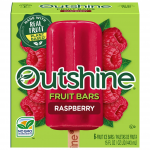In need of a nigh-disposable extra-portable machine for some light web browsing and such while I'm out again, and less an EliteBook 840G8 that frankly had some bad memories attached that I gave to my neighbor before she moved, I re-examined my discarded project Chromebook -- an HP 13g1, from what I can tell the highest-trim model with the Core m7-6y75, 16GB of RAM, and the ultra-annoying ultra-highres 3200x1800 13.3" display. 2015's finest. I don't understand why they could put an m.2 slot in a Haswell Chromebook they released the previous year with a Celeron, but not this; indeed, it has only 32GB of soldered eMMC for storage. Sufficient, but with no breathing room or options for entertainment that aren't streamed in off the network.
After updating my copy of Debian I'd stuffed on there I managed to break my fragile sound drivers -- I'd needed a custom kernel to have support for the audio devices these Chromebooks needed on there, anyway, though newer stock kernels implement the modules fine. Chromebooks do funky-wacky things in some ways. I gave it up as a bad job, pulled a backup of its eMMC, and threw a copy of Arch on it using... some graphical ISO the name of which escapes me now, but does indeed install regular full-fat Arch. I used said ISO because the pixel density of this thing is frankly terrifying and I outright cannot read a VGA text console at this size, even with a 16x32 vconsole font.
... It also preloaded a desktop environment. I'd not intended to use one, trying to keep as many spare CPU cycles handy as I could manage -- my Debian setup had used i3wm and I'd planned on replicating my setup there. Of the options available, I'd picked XFCE as it was the one I deemed least likely to make me sit and wait on a loading screen. I was pleasantly surprised by how responsive it was. I know I shouldn't be shocked by XFCE being usable, but it was more that any full desktop-environment was a pleasant experience. I'm very able to eke workability out of absolutely gutless machines -- I was once challenged to being stuck with a 1GHz Pentium III for a week, and honestly they should have stipulated that I had to use a modern operating system and productivity stack, because it was almost too easy.
Predictably the scaling was an issue. I eventually worked out some combination of environment variables and DPI settings to get everything graphical scaled acceptably without blurring all the text, though I did turn around and increase font and icon sizes for my environment after that (10pt fonts and 24x24 icons up to 12pt fonts and 36x36) as even an effective 1600x900 is just a mite small for my eyes at 13 inches.
As originally configured, the CPU in this thing was struggling to boost past 1.6GHz all-core, putting its performance figures in the "miserable" range, by my estimate roughly comparable to trying to eke out an existence in the modern day on a low-end Conroe-era Core2Duo. Even with an undervolt of 75mV on both the CPU and iGP, it didn't really want to go past 1.8 all-core, 2 flat for single. But I discovered a little script I'd used to talk the intel-rapl driver into forcing the power limits to reasonable numbers on my old 2015 MacBook Pro 13, where it used a 28W i5-5257U but was constantly thermal throttling because the cooling solution was intended more for an ultrabook-class power draw around 15W and they were allergic to turning the fan on. Some adjustments to the watt limits and further adjustments to power-limit length and I was in business.
Did you know the m7 is stuck with 4.5W to work with in PL1? For 28 seconds... for some reason? And PL2 is just useless. 15W, but for literally a thousandth of a second. Talk about race to idle. I tuned these numbers to a much more reasonable 7W for 25s at PL1, and 12W for 5s for PL2. Now my all-core is consistently around 2.6 under full load, single hitting 2.8 -- not quite the 3.1 promised by Intel, but much closer than 2.0. Battery life is impacted, but not as much as you might think really -- being able to boost high enough to finish work before being slammed with more means it can actually return to idle instead of sitting at 50-100% all the time. I'd say it was about a 30% reduction in battery life, but this thing got around 9h off jump, so 6h with the machine actually being tolerable to use is fair enough.
Purely due to timing of release, the HD515 this has for graphics can only decode up to h264 and VP8, so I did have to install h264ify to get smooth YouTube playback. Such is life. Really not bad for a 10-year-old Chromebook, even a high end one.









